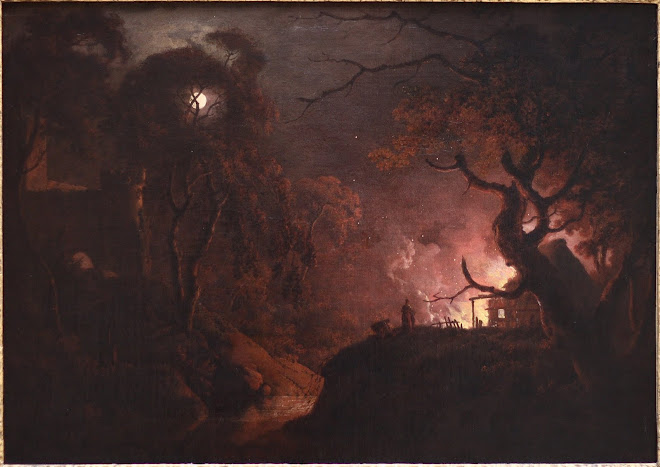Kim Keever
Kim Keever's sublime landscapes have the appearance of the historical paintings of Rosa, Turner and Joseph Wright. However Keever does not use paint and a canvas he creates his ethereal worlds with in an aquarium adding topiary and pigment and capturing the changes that occur in the environment on a large format camera. I haven't seen a sequence of shots as Keever selects the perfect scene, yet I imagine if each shot were put next to one another the movement seen would add to the eery worlds behind the glass. I love the idea of capturing a moment in the landscape, that moment that hold the power, the shot that accentuates and highlights the thunderous clouds or twisted trees.
Gregory Euclide
Gregory Euclide's work interests me due to it's textural qualities. I enjoy the way he uses layers to create strange and evolving landscapes. The way in which he just concentrates on a small area in a space, leads me to conjure up ideas of hidden realms behind the structure, I almost want to peel of the layers myself to see what else can be unearthed. Euclide uses a mixture of mediums including wall paper and emulsion, and works outside of a rigid frame work, creating pockets of landscapes.
Bruce Wilhelm
I have included Bruce WIlhelm in my research as an example of layering a scene. There is a theatrical stage element to his work, and he tends to play with the fusion of various planes in an unconventional way. Although this work isn't reflective of my personal aesthetic values, it is a great example of the possibilities in creating a fictional landscape, and an idea of how fragmenting can add to the chaos of a scene.

Jacek Yerka
Imaginary worlds and fictional landscapes are heavily used with in illustration work. I love the way Yerka uses a limited palette to create his series of paintings, and enjoy the childlike intrigue the work provokes.
Glenn Brown
 Glenn Brown is one of my favourite painters, and on researching for my project discovered these two landscapes. I did not immediately recognise them as Browns work mainly due to there monotone nature, however I think they are great examples of the way in which the texture and density of land, in particular rocks and cliffs can be used as a starting point in creating strange landscapes.
Glenn Brown is one of my favourite painters, and on researching for my project discovered these two landscapes. I did not immediately recognise them as Browns work mainly due to there monotone nature, however I think they are great examples of the way in which the texture and density of land, in particular rocks and cliffs can be used as a starting point in creating strange landscapes.









